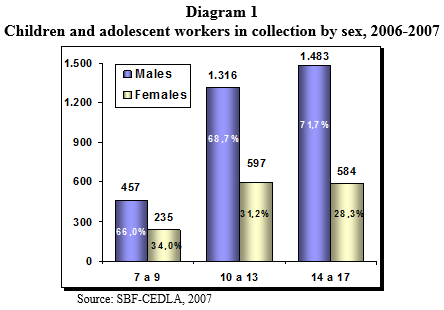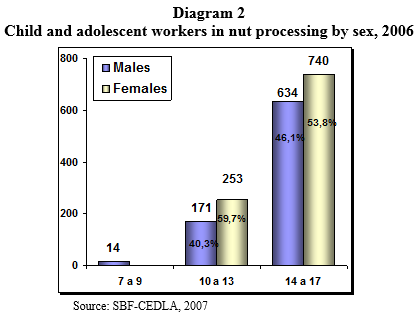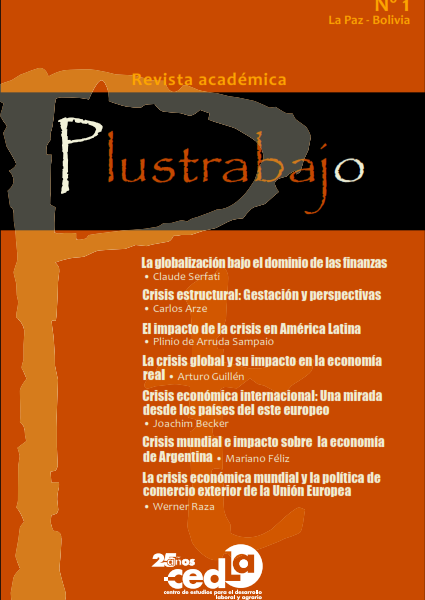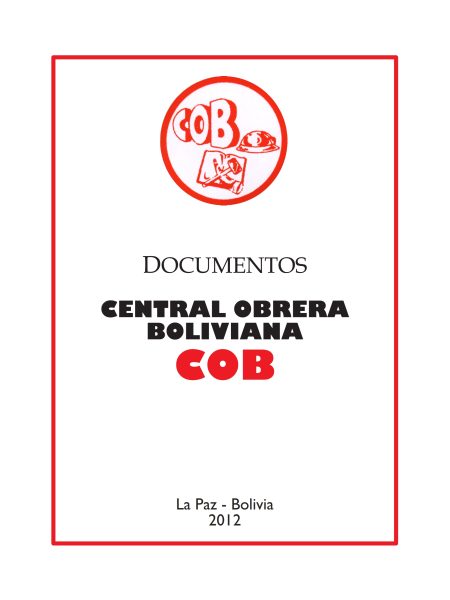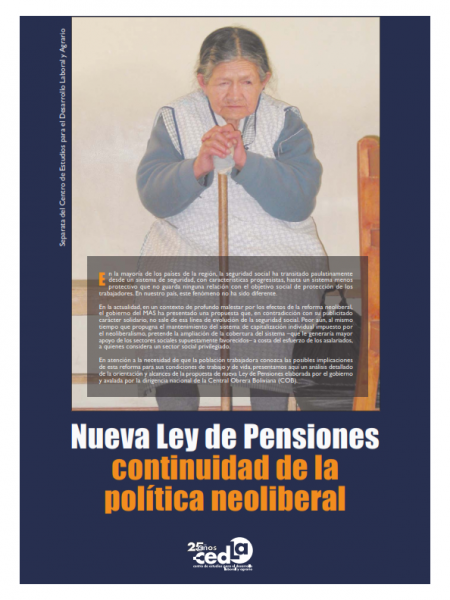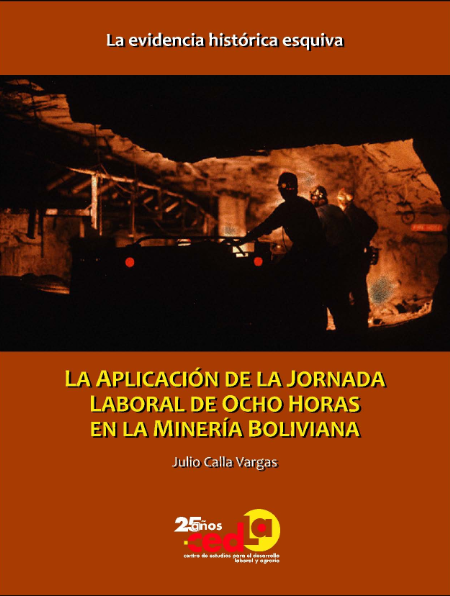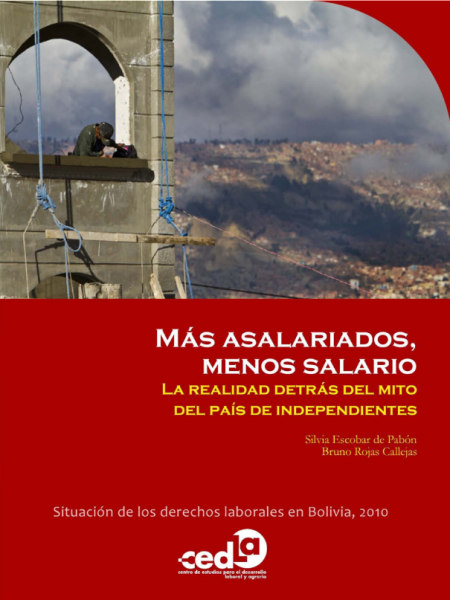No time to dream: Child and adolescent labour in the brazil nut industry
- Descripción
- Información adicional
Descripción
The Brazil nut industry is an export enclave composed of centres of raw material production located geographically in the northern Amazonian region of Bolivia, with few connections to the rest of the country and owned or controlled by major industrial and forestry businessmen settled in the urban and industrial centres of this forested region. The industry is heavily dependent on the shifts in the international demand and the prices of its sole export product, whose processing industry occupies a hegemonic position with reference to the economic and social relations of the region. Like all primary export economies, it displays features of a backward capitalism characterised by a low level of development of productive forces and archaic relations of production, whereby capital dominates the labour force with the aim of obtaining high levels of profit.
Since the end of the 1980s, Bolivia has occupied the first place in exports of Brazil nuts, which represent the second highest value among non traditional exports of the country, worth US$71 million in 2006. In that year, the quantity exported was about 20.000 metric tons.[1] International demand for Brazil nuts is headed by the United States (38%), followed by the United Kingdom (24%) and, a long way behind, Germany and the Low Countries (7%). Bolivia, as the principal world producer, sends its exports mainly to Europe (60%), the United States (36%) and finally to Asian countries which have a growing demand.
International nut prices are determined by supply and demand in the absence of product exchanges, futures markets or auctions which could provide points for price setting. Since 2000, prices reached their highest levels of US$4.36 per kilo in 2005, falling to US$3.61 per kilo in 2006. These short term price fluctuations generate uncertainty among exporters, but at the same time stimulate the search for new markets in order to spread the risks.
Brazil nut exports display an important increase in quantities and prices since 1993, which has driven the growth of the industry in the region. Compliance with standards of environmental management or quality which are required for export certificates has allowed producers to consolidate their presence in traditional markets and conquer preferential markets; however, the definitions of criteria for certification generally do not link topics of quality, organic production or food safety with social themes, since their intention is to protect the health of consumers rather than the social conditions of the workers who produce what is to be consumed.
The growing demand for a work force in the Brazil nut industry are concentrated in the phases of collection and processing (specifically, in shelling the nuts). Capital demands this labour from families living in the region. When an adult man is hired to collect nuts in the forest, the labour of his wife and children is automatically included; in the same way, when a woman is hired to shell the nuts, her children are included in the labour process. Payment by piecework, used as a mechanism to control the workers, is the instrument which the companies use to incorporate the labour of sons and daughters, other relatives and unrelated people, disguising a relation of dependent labour as what is apparently a form of family work.
Workers are hired for nut collection via a system of advance payment known as enganche, which allows the company to avoid the social obligations which emerge from a relation of direct contraction, leaving the workers’ rights subordinated to the interests of the company owners and labour contractors. Hiring is mediated by the system of habilito, which consists in advancing a sum of money to guarantee participation in nut collection and the periodic provision of consumption goods during the time spent in collection centres. At the same time, the industrial companies combine the direct hiring of those workers known as ‘account holders’ (dueños de cuenta), with subcontracting in the factory of sons and daughters and other workers on the part of the account holders, a form of exploitation of workers by workers typical of the first phases of industrial development.
Brazil nut collection is more and more dependent on the hiring of a seasonal labour force which goes to the forest from the city of Riberalta, where the majority works in the nut processing factories during the rest of the year; evidently, capital coordinates the periods of work in the factories with those in the forest, increasing its control over the labour forice, in a context of little state intervention in the supervision of the relations between capital and labour and strong restrictions on the collective actions of union organisations in defense of workers’ rights.
In 2006, the Brazil nut industry as a whole generated 24,289 jobs: 16,957 temporary jobs in collection, and 7,332 jobs, permanent or temporary, in processing.[2] Taking into consideration other municipalities in the Amazonian region, still more jobs are generated, above all in collection. In both phases of production, one in four people employed is a child or an adolescent.
Our study aimed at discovering the magnitude and characteristics of child labour, in the wider context of families’ insertion in nut collection and processing and, specifically, determining the consequences of child labour for the exercise of their rights to education and health. It was carried out in the heart of the Brazil nut enclave composed of the municipality of Riberalta in the department of Beni, the principal industrial centre, and the municipalities of Gonzalo Moreno, San Lorenzo and Puerto Rico in the department of Pando, centres for the production of the raw material, where a survey was made of Brazil nutters’ homes,[3] in-depth interviews with all the actors linked to the Brazil nut production chain, and Creative Information Groups (CIGs) with children, adolescents and parents.
In this context, I shall analyse the central aspects of work and labour conditions in nutting families, both in nut collection and in processing, and the concrete situation in which children and adolescents work.
Brazil nut collection or harvest (zafra)
This activity is carried out between the months of December and March. Brazil nut trees are a wild species that grows scattered in the forest, sometimes with no more than 5 trees per hectare. The “nuts”, are in fact seeds, encased in a very large and thick woody shell. They are not picked directly since the trees are 30 m tall, but allowed to fall to the ground. The outer shell is split with a machete and the seeds are sent to the factory, where their inner shell is cracked and peeled off (see below `child an adolescent labour in nut processing´¨).
The collection process combines two forms of organisation of production: the first, specialised in nut extraction, is made up of managerial economic units known as barracas, some of them traditional and others administered by industrial capital as part of a process of vertical integration – which at present control close to two million hectares in the territories with greatest density of Brazil nut trees. In the barraca, the collection process is organised on the basis of methods of work which have not changed in over a century, that is, with very archaic means, techniques and relations of production; as a result, production, productivity and therefore profit depend on the extensive use of labour power, the intensification of work and paying low wages.
The second consists of peasant economic units which combine agriculture and extractive activities on their own land with seasonal wage labour in the barracas. They are organised in communities of 20 to 30 families and they are subordinated to forestry and industrial capital through the sale of the raw material and of their own labour power. It is estimated that these communities have gained access to around 2.5 million hectares, although their limited access to other productive resources (capital, roads, transport) does not allow them to obtain benefits by making use of forest resources.
In 2006, Brazil nut production reached two million boxes (a box contains 23 kilos), 1.6 million of which were collected in the four municipalities mentioned, mobilising a significant labour force. Brazil nut collection is the most important regional activity during the rainy season, in comparison with the few other alternative occupations available in the country and the city. It is, at present, the space where families (children, young people and adults) can obtain money incomes which in many cases are significant in relation to their limited economic opportunities during the rest of the year. Obtaining a cash income motivates many people to make the seasonal move to a barraca, where all the labour power available in the family group is used to achieve the desired level of income.
According to our survey of a sample of Brazil nutters’ families (SBF) it can be estimated that over the 2006-2007 season, 16,957 people worked in collection, of which 4,756 were children and adolescents. 60.4% of the collectors moved to barracas to work for wages via the system of advance payments. Under this system, the owner of the traditional or managed barraca hires a contractor to take charge of the relations between capital and labour, in most cases evading direct responsibility for the labourers’ working conditions. The relations contracted are characteristically informal; proof of this is that in 2006-2007 only 39% of collectors had signed a written contract.
Nut collectors are not protected by the law, since they are not included in the General Labour Law as rural wage labourers. Hence, working conditions are subjected in the last instance to the arbitration of owners and subcontractors who limit the exercise of workers’ rights. In effect, the ideal terms which ought to apply with reference to the price of a box of nuts, the employers’ responsibility to take the workers to a barraca in adequate conditions, health care, the provision of basic consumption goods in habilito at market prices, and others, are complied with only in part or not at all. The fact is that, whether or not they have signed a contract, collectors’ rights are not recognised when they go to the forest.
Given that whole families move to the barracas during the collection season, for each person directly hired there are two or more family members (2.8 on average) who work with them, among them children, adolescents and women, who thus provide cheap labour for capital.
The city of Riberalta is the main centre of hiring and contracting collectors. While they travel to the collection centres they suffer a lot; generally they travel by river in open motor launches, or in lorries crowded with people; apart from the exhaustion due to the overloading of cargo and passengers, rain and persistent winds affect the travellers’ health and at times they risk their lives when the rivers are in flood. Once they arrive at the unloading point, they have to travel some hours more to the main barraca, in pick-up trucks or on flat-bed tractors, while the smaller barracas are reached on foot, with personal possessions and provisions loaded on their backs.
Child and adolescent labour in nut collection
The work process is labour intensive both in the barracas and the communities and is carried out with rudimentary means of production such as machetes. It consists of four phases: gathering or harvesting, post harvest, storage and sale. Gathering begins by cleaning or opening paths in the forest and repairing or building huts called payoles which are used to live in and as initial storage sites. The fruit is collected from the ground once it has fallen from the trees and is piled up in one place. When a sufficient quantity has been gathered, the fruit is split open with a machete to extract the seeds, these being the so called ‘nuts’, taking care not to damage them with the machete. This task is carried out near the tree in an open space to avoid being hurt by ripe fruit which falls from the tree due to the wind or torrential rain.
Post harvest treatment consists in selecting and bagging the undamaged seeds, to be carried to the payol or the collector’s house, usually on foot. Finally, they are stored in a simple construction which avoids damp and fungus infections, before being transported to the factories where they are processed for sale.
In the 2006-2007 harvest, the families mobilised included 4.627 child and adolescent workers, 2,605 of them children and 2,066 adolescents, with a majority of males in each age group. The fact is that the children ‘accompany’ their parents, but end up taking an active part in collection, in fact more actively that adolescents, despite the prohibition on employing children in relations of dependent labour in Bolivian legislation. In the barracas, children and adolscents mainly work in gathering (picking up, piling and selecting the fruit, and putting it into sacks) and carrying it to the payol. 70% of them take part in these tasks for an average of 7 hours each day. Picking up and piling the fruits is dangerous: the fruit is scattered through the bushes around the great trees, and the collectors are at risk of being bitten by snakes and insects and may be hit by fruit as it falls. For these reasons, a task for the adults (usually the father) is to clear the area for collection, cutting the bushes down with a machete. Once the area is ready he whistles or shouts to his children to come and work. As the girls and boys acquire experience, they also split the fruit, with the risk of injury as heavy machetes are used for this. The nuts are carried to the payoles by the children throughout the day, in greater quantities as they go deeper into the forest; this task is one of the hardest and most damaging to their health due to the weight of the loads and the lack of mechanical means of transport. It is carried out with rustic tackle which allows one to support and balance the weight as one moves over irregular, humid and slippery terrain. The average load varies from 11 to 35 kilos for children and reaches 46 kilos (two boxes) for adolescents.
Collectors work on average for 8.2 hours a day, but 43% of them, above all the men, work longer than this average. The number of hours worked depends on the helpers a collector has: the fewer the helpers, the greater the intensification and extension of the working day. For this reason the collectors try to take their family with them to the forest, at the same time as they provide additional labour and reduce direct and indirect costs for the capitalist, given that the children, and in particular the adolescents, work almost as many hours as the adults.
The median productivity for a family is 118.5 boxes with an average of 8 hours worked per day and 2.8 collectors. During the 74 days which the average family passes in the forest, the median net family income is 6,581 Bolivianos, which represents 833 Bolivianos (US$104) per person per month, a sum equivalent to the salary of an unskilled worker in the cities. We were not informed of cases of children and adolescents who received independent payment. The high prices charged for the consumption goods provided in the company store in the barraca, fraud in the weighing of the boxes of fruit and unforeseen health problems tend to reduce the amount of the final balance paid out to the family at the end of the harvest season.
In recent years, most collectors end the season with a payment in their favour, which has left behind the practices of debt peonage which were so typical of this activity; however, the payment is not always made immediately or as soon as they return to their place of origin. More than half the families have to wait for from one to six months to receive it, depending on the liquidity of the barraca owners or managers. This is another coercive mechanism which represents a reduction in wages, because these are paid when the owners wish to and without including any interest to compensate this unjustified retention.
Living conditions in the barracas are, in general, very precarious due to the lack of adequate housing, lack of access to basic services and bad water quality. 80% of the families sleep in one room and 4% do not have a covered space to rest in. 88.6% of the families lack any source of energy and 52% do not have a latrine. The water they consume generally comes from rivers, springs and irrigation channels with a high probability of contamination. 87% consume the water just as they collect it, which explains the high incidence of intestinal parasites and diarrohea which mainly affects children and adolescents.
During the collection season, children and adolescents are exposed to blows or fractures from falling fruit, which at times can kill people; insect bites (worms which infest the feet, mosquitoes which carry malaria and dengue fever), snake or scorpion bites, which provoke fever and severe pain, and the attacks of wild animals, such as the jaguar, which is known locally as “tiger”.
In the 2006 season, 3.2% reported having suffered some kind of accident during the last collection season; likewise, 21% of the children reported illnesses such as malaria, acute respiratory infections and severe diarrhea. The poor nutritional state in which they arrive at the harvest, added to the low quality of the food and consumption of untreated water, leaves their organisms more vulnerable to disease during the rest of the year and, in some cases, has after-effects which stunt their growth.
Brazil nut processing
Brazil nuts are processed by large, medium sized and small capitalist enterprises. The process is not complex, but it is labour intensive, using mainly mechanical and electro-mechanical machinery and with the workers concentrated in the stages of ‘breaking’, that is shelling, the nuts; here, likewise, productivity and profit depend on intensifying work, and paying wages which are lower than the value of this work.
In 2006 24 processing enterprises were registered in Riberalta and one in the city of Cobija. Three factors have continued to the constant growth in their numbers since 1990: the increase of prices in the international market and the fall in competitiveness of the Brazilian nut companies; public policies which favour exports and policies of making employment more flexible – which allow capital to maintain previous forms of hiring (subcontractors within the factory, wages by piecework) and make it easier to sack workers in accordance with fluctuations in demand in the international market – and finally, the growth in urban population due to the final crisis of rubber extraction and migration from the countryside to the city.
The population of the city of Riberalta grew by a factor of more than three – at present it has more than 81,000 inhabitants – giving rise to the formation of a surplus labour force which not only fulfills the role of depressing wages, but also permits greater subordination of labour by capital,
The organisation of the labour process is characterised by a high level of division, specialisation and standardisation of tasks. People are seen as means or instruments for achieving greater volumes of production and, in many cases, are subject to authoritarian or despotic treatment. What we have here is an adjusted version of taylorist management, where the forms of command are saturated with informality, based on rules the majority of which are unwritten, and discretional attitudes on the basis of personal sympathies; the application of flexible working hours and piecework wages allow indirect subcontracts within the factory, which benefits the employers by saving labour costs and goes against the workers by obliging them to a greater productive effort and intensifying family and individual work with low wages.
With this form of organisation, the workers’ profile corresponds to people with low levels of schooling, capable of concentrating on just one task and docile in subordinating themselves to the norms imposed by the company; for these reasons, they compose a work force easy to substitute or exchange within the company or between companies. Among the workers, 60% are women and more and more are adolescents and young people of both sexes who are characterised by greater productivity and less family reponsabilities.
Child and adolescent labour in nut processing
In 2006, nut processing employed 21.9% of the population in Riberalta and about half of these workers combined seasonal occupation in the processing plants with nut collection. In that year, the plants employed 7,332 workers, of whom 1,812 were children and adolescents. In recent years, the companies have begun to prohibit child labour so as to comply with the demands of the market with respect to the harmlessness of food and the application of technical norms avoiding contamination and guaranteeing the quality of the nuts, which bring with them a process free of infant hands and are leading to the gradual disappearance of child labour.
This process is being fomented by the excess offer of adolescent labour, due to a demographic transition which allows the companies to replace child labour by adolescent labour, without affecting their strategies of reducing labour costs, given that the majority are subject to an indirect contractual relation.
The labour process with respect to the nuts consists of nine phases: drying, pre-selection; steaming[4], ‘breaking’ or shelling, selection according to size and quality; trimming; dehydration; quality control; and packing the nuts. The main task carried out by children and adolescents is shelling the nuts (94,0%) which is done with the help of a shelling machine in the large sheds used for this purpose, where wooden tables and benches are lined up with small groups of workers at each table. It is repetitive work, which obliges one to maintain the same position, on a backless bench, in a space with high temperatures and in many cases with little or no ventilation.
Children and adolescents are inserted in the work process via the ‘account owners’ who incorporate their sons and daughters and other people from their neighbourhood. In this way, the male and female account owners fulfill the functions of direct employees, task supervisors and subcontractors of the labour force. The generalisation of this practice in the processing companies has lead to a situation where barely four of every ten workers has a direct contract with the employer.
All the children and 98% of the adolescents are subordinated to another worker, who may or may not be a member of their family. That is to say, indirect subcontracts are the mechanism which continues to be used to evade the contractual obligations established by law, leading to the lack of social protection for the adolescents, who do not have the right to social benefits, maternity protection or unionisation.
There are two forms of payment, one according to the hours worked which applies to the administrative staff, and another by piecework which applies to the workers and account owners who use the same form to pay those helpers who are not part of their family. The duration of the working day for the nut shellers and their helpers on piecework is flexible, which allows them to make use of their time alternating productive, reproductive or school activities with the sole condition of covering their production quota (50-60 kilos is the minimum) and arriving at the factory at a set time so as not to affect the flow of production.
The disadvantage of the flexible timetable is that it leads to the intensification of work and the prolongation of the working day. Children and adolescents work an average of six hours a day for five days a week (two out of ten work up to six days). The children and adolescents start their working day in the small hours of the morning. Eight out of ten start work between two and six in the morning, which corresponds to night work but is not paid as such. Although the companies are establishing five in the morning as the hour at which work starts, those who work in sheds without ventilation are obliged to maintain the previous timetable so as to finish their workday before the time when the increasing heat reduces their productivity.
Wages for those on piecework, that is to say for 95% of the labour force in nut processing, whether account owners or their helpers, is set by establishing a price per kilo of shelled nuts (2.2 Bolivianos per kilo on average in 2006). Median daily productivity is 20 kilos of shelled nuts per person with an average working day of 8 hours for 5.2 days a week. The average productive capacity of children and adolescents varies according to their age, but it is more than 10 kilos per day and greater among the males.
The account owners’ wages are composed of the payment for their own work and for that of their helpers and reach an average of 1,202 Bolivianos a month. 64.5% receive an income lower than this average. The shelling assistants who receive payment in cash declare an income of 419 Bolivianos a month, 509 Bolivianos for males and 314 Bolivianos for females. In general, children and adolescents contribute their work to generating a family income and the monetary payment they declare is usually what they are given to spend (so to speak, what they get as pocket money) and not a wage as such. This characteristic impedes a vision of themselves as workers who are subject to a regime which exploits their labour power.
As regards health care, only 35.1% of the workers, 45.3% of the account owners and 29.3% of helpers in their condition of dependents of the official employee have health in national insurance (Caja Nacional de Salud, CNS).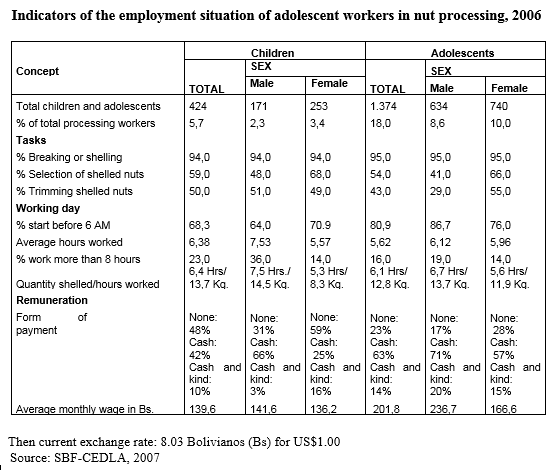
The dead letter of the law
The company owners make use of child and adolescent labour in such way that they are not obliged to take responsibility or pay it directly, arguing that the families are those who bring their children into production. However, it is obvious that the children do work for the employer and the denial of labour relations is a mere subterfuge.
This happens despite the fact that the General Labour Law, the Child and Adolescent Code and the Law 3247, which regulates wage labour in Brazil nut processing, prohibit child labour in the form of dependent work and regulate the protection of adolescent labour. In consequence, child and adolescent labour which is widely used in Brazil nut production infringes the norms presently in force, both through the illegal incorporation of children in the work process and through incompliance with the norms which oblige employers to hire adolescents directly with all the benefits established by law.[5]
The causes of child labour
It is very common to find postures which attribute child labour to poverty, with the argument that their contribution is indispensable for the subsistence of their families. This argument is strongly internalised by poor or indigent families and functions as a legitimising element for the illegal employment of children on the part of the employers. On the contrary, this research shows that the causes of child labour can be explained on the basis of the economic, juridical and social structures which allow entrepreneurial sectors to maximise their profits by recurring to labour which is cheap, docile and less organised to demand its rights. From this point of view, poverty can only be considered as a factor which contributes to the persistence of entrepreneurial strategies of accumulation and domination of a labour force which includes children and adolescents.
In the context of a capitalism which exports raw materials, the unlimited exploitation of the labour force, which has been historically characteristic of this region, was exacerbated by neoliberal policies which promoted flexibility in labour relations. In Brazil nut production, in a context of absence of state intervention, payment by piecework and subcontracts within the factory have come to be the most widely used mechanisms for reducing labour costs and intensifying work. This capitalist strategy of maximising profits by means of exploiting cheap labour has found that children, adolescents and women are the most profitable economic recipe, as can be deduced from the composition according to age and sex of the population employed in the Brazil nut circuit.
In consequence, the causes of child labour are to be found in the demand for labour power and not in the offer or supply of the same. The principal proof of this is that the processing companies have begun to prohibit child labour in order to comply with external demands for quality, whereas the families have to submit to this decision. When these same companies require a work force for nut harvesting where the demand for quality does not apply, the prohibition of child labour does not apply either, because what is needed is maximum production in the shortest time and at the lowest cost possible.
As a result, in terms of causality, the “cultural” explication for the reasons for child labour is not an aspect linked to the supply of labour; it is part of an entrepreneurial strategy (economic) which is reproduced taking advantage of the absence of control of work norms (juridical), the weakness of union organisations or their subjection, but also results from the workers’ need for additional income, due to their greater instability of employment and the lack of alternative work opportunities (social).
A study carried out in 2003 on activities in Brazil nut processing showed that the distribution of the surplus or added value in 14 companies was as follows: 35% was appropriated by the workers in the form of wages (about 4,000 people); a similar percentage (34%) stayed in the hands of 25 company owners in the form of profits; and the remaining 31% was distributed between the banks and the intermediaries.[6] In consequence, it is the unequal distribution and not the cultural logic of the families which feeds the vicious circle of poverty and child labour in the Brazil nut industry.
In the region studied, the situation of poverty is critical; more than 80% of the population have unsatisfied basic needs, worsened by the lack of alternatives of work outside the Brazil nut circle. Both factors combine to generate conditions for greater domination of the labour force by capital and the persistence of child labour, above all among Brazil nutters’ families.
Child labour outside the Brazil nut circle
In the Brazil nutter families, there is a population of 14,275 children and adolescents in working age ( 7 to 17 years), of which 3,264 (22.8%) work in fields which are not concerned with Brazil nuts. This group is made up of 1,403 which only work in non-Brazil nut activities (42.9%), in addition to 1,503 (46.0%) who combine seasonal work in nut collecting with other types of activity, this being the most frequent combination. 186 (5.7%) combine nut collecting and processing with work in other fields, and the remaining 5.3% combine other activities with nut processing.
The main fields of activity are, in order of importance, agriculture, hunting and fishing, commerce and diverse personal services. On average, they spend seven months of work working in these activities, which shows that they are complemented in the course of the year with work in nut collecting.
The average monthly income for those who are paid wages is 529.8 Bolivianos, with a substantial difference between sexes, since the girls only receive 351.7 Bolivianos on average, versus an average of 603.7 Bolivianos for the boys. The levels of income are clearly superior to those received in the Brazil nut circuit, which once again shows the undervaluing of their work both in collection and in processing.
Child labour in domestic tasks in their own homes
This is another context of child and adolescent labour which is generally invisible. The study revealed that the prohibition of child labour in nut processing has contributed indirectly to an increase in the dedication to domestic tasks at home, since as a result the mothers and the adolescent sons and daughters spend longer working hours in the processing factories.
Among their activities are those which could be called proper for their age, such as making their beds, sweeping their rooms or putting away their clothes. But unfortunately these are combined with others which demand a degree of responsibility and effort which does not correspond to their age, such as washing the dishes for the family, sweeping the rest of the house or washing their clothes, which the children themselves call “the chores”, apart from looking after their younger siblings. If this were not enough, in addition there are complex activities such as cooking for themselves and for the rests of the family, looking after babies, which implies a risk for the baby itself, and attending to and washing the clothes of the family, which demands greater physical effort. The last two tasks mainly fall to the girls.
In the midst of their multiple work and domestic obligations, they must find time to do their school homework in a setting which offers little space propitious for this. In this way, the children and adolescents who belong to nutting families are trapped between three areas, that of the school, that of production and that of the family, which deprive them of time for their creative and playful development; that is to say, they live without time to dream.
Child labour and the right to education and health
In the nutting families, the school age population (4 to18 years) is a total of 19,863 children and adolescents. In 2007, the percentage enlisted in formal education was 83.3% The coverage in kindergarten is low (39%), in the primary school classes it is more than 100% due to the presence of pupils who are repeating years and thus are older than the age which officially corresponds to this level, while secondary school coverage reaches 48% of the adolescents, due to the lack of educational services at this level in rural municipalities.
With regard to the relation between school and work, the dates at which they return from nut collection, after the school term has begun, make it difficult to find a vacancy in a school, and having missed the first classes it is not easy to catch up with the rest of the pupils. There are no mechanisms or policies at the level of the municipality or the department to support the children and adolescents who turn up late due to the nut harvest. The possibility of catching up, both in urban and rural schools, is generally due to the attitudes and voluntary actions of some teachers and headmasters.
No direct relation has been found between child labour and dropping out of school. The level of dropouts in primary school is low, higher in rural municipalities (10% on average); in Riberalta this level is much less (5.4%) due to the concentration of educational services in the city. In general, when children abandon school this is not definitive but rather has a temporary nature; they drop out for a year but return the following year, although this occurs less often as they get older.
In effect, child labour results in a poorer level of educational achievement and is the route to higher levels of repeating a given grade and thus falling back in the level of schooling in relation to their age group, which ends up in dropping out permanently in adolescence. In the case of girls, the overload of domestic tasks at home in replacement of the adult members gives rise to a greater fallback at school and leads to abandoning education later on.
Premature pregnancy and early marriage – a common problem in the region – are other reasons for dropping out of school. Although the schools support pregnant adolescents and young couples, promoting their inclusion in accord with existing norms which forbid the expulsion of pregnant and/or married pupils, social prejudices are stronger and soon give rise to the decision to leave school.
The research concluded that the levels of fallback in nut-working children and adolescents are similar to those observed in rural areas in Bolivia in general. This process originates when these children start school late and is worsened by the frequent repetition of grades due to temporary abandonment, which in many cases is converted into definitive abandonment due to switching priorities between schooling and work.
Health services in the region are far from reaching effective levels of coverage and quality. There is still very little health infrastructure, in addition to the lack of human resources, problems with respect to the quality and the humanity of treatment and insufficient inputs and supplies. Riberalta, as an urban municipality, offers better health coverage than the rural municipalities of Pando.
The problems of access to health services are determined by the places where nut collection is carried out. The move to the barracas subjects the collectors to a seasonal change in their living conditions, with greater exposure to the risks proper to forest life, accidents and endemic illnesses of the region, with respect to which they lack social protection since they do not have access to prompt medical attention or medication, a situation which is worsened by the incompliance of contractual obligations on the part of their employers.
Malaria, which affects about 40.3% of nut collectors, is treated by mobile teams which have little success in its prevention due to the difficulties of coordinating this action (guaranteeing a permanent supply of preventive medicines which have to be taken throughout the period of residence in the malarial zone) with the barraca operators, who only take action when the collectors fall sick with this illness and need medicines to cure it. On the other hand, about 1,300 people suffered some kind of accident in the course of the last collection season: they reported cuts (37%), blows (26%), fractures (21.7%), attacks by mosquitoes, animals and/or snakebites (9.7%), and others (5.6%). Children and adolescents also suffer these accidents, but only half the cases received treatment in the last season, and the treatments were paid for personally (86% in cases of sickness, 72% in cases of accidents). This displays how often the employers do not comply with the contractual obligation to cover health care for their workers.
With respect to nut processing, health problems are attended by the National Health Assurance (Caja Nacional de Salud, CNS) when the workers and their family are insured by this entity (2,571 workers and their dependents). Those who are not part of this system must go to private doctors who work in coordination with the processing companies. In 2006, 64% of those who fell sick (1,234 people) received medical treatment, although the costs were paid directly by 60% of the workers. Accidents at work are not frequent among the nut shellers who use hand-operated machines; the company owners are modifying the productive process considering aspects of industrial security, in addition to others associated to the harmlessness of food and product quality which reduce risks in the work process.
In general, there are various problems at the time of receiving medical attention in cases of sickness or accidents. Among them are the lack of provision of medicines, lack of transport and problems of a cultural nature expressed in lack of trust in the doctors, health personnel and the health system in general. Although there have been improvements in terms of access to health services, there are still many absences which lead to another drain on the low wages of the workers.
Towards some conclusions
Here we have tried to show that child and adolescent labour in Brazil nut production is the expression of an economic, social and cultural system which does not guarantee adequate conditions of employment and income for the adult labour force, with the consequences of increasing social inequality and the deterioration of the quality of life for the greater part of the population of Bolivia’s northern Amazonian region. In this context, the children who work collecting and processing Brazil nuts suffer effects in their rights to education, health and recreation, and finally in their integral physical, emotional and social development.
In the midst of an absence of development policies oriented to distribution of resources and social integration, the Bolivian state has adopted the promise of developing strategies and actions directed to eradicating child labour. The effort of this research to make known the characteristics of Brazil nut production, the social relations of production, the tasks and working conditions of nutting families, specifically among children and adolescents, points to different dimensions from which to contribute both to the eradication of child labour in the region and to promoting the integral exercise of their rights.
Policies and actions which could be identified by the state, union organisations, entrepreneurs and international aid, should be directed by the criterion of confronting child labour on the basis of the causes which give rise to it and not only its manifestations. The research carried out seeks to contribute to this challenge.
[1] Only 2% of production goes to the internal market.
[2] These figures cover the four municipalities of Riberalta, Gonzalo Moreno, San Lorenzo and Puerto Rico.
[3] ‘Brazil nutters’ homes’ are households where at least one member works in Brazil nut production.
[4] The nuts are heated in steam owens to sotten their shells and make then easy to peel.
[5] Only 2% of adolescents enter under the regime of direct hiring.
[6] For details see the book by Lourdes Montero and Pablo Poveda, Ser castañera, CEDLA, La Paz, 2003.
Información adicional
| Autor | |
|---|---|
| Catálogo | |
| Categorías | |
| Gestión |


